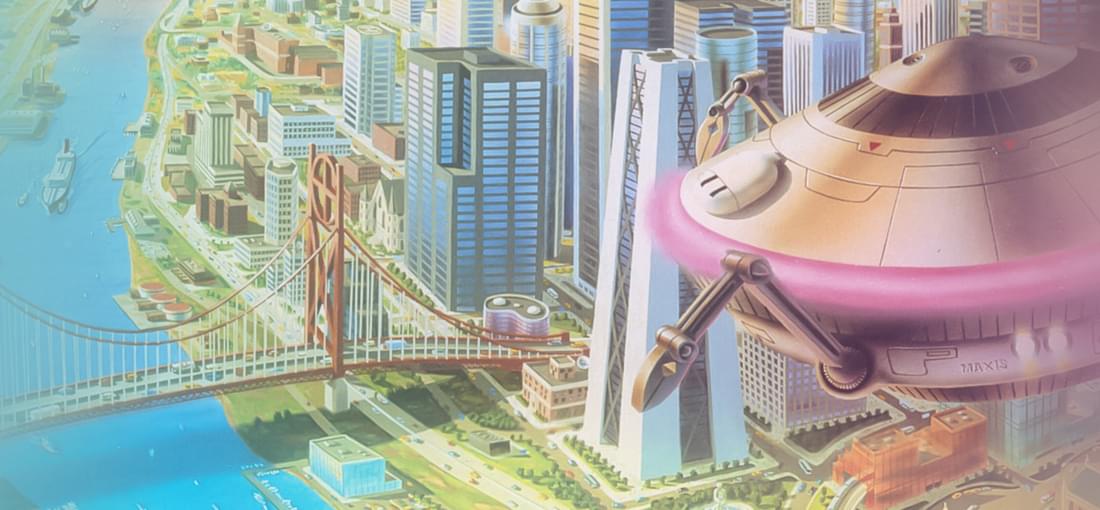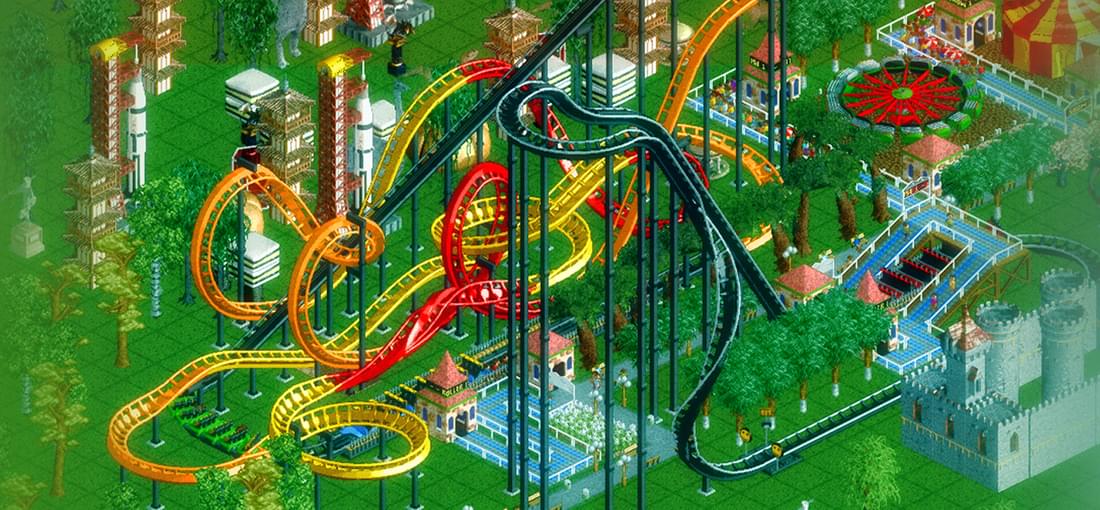


There's a reason why Simcity is one of my top all time favourite franchise. Simcity 2000 being one of the most memorable in the series. There's also a reason why city planners and architects play this game. At the start of the game, you name your city and the game randomly generates a terrain map for you which you can edit as much as want if you wish. And as the mayor you start off laying the basic foundations of the city with the starting funds. Your new city will require power, in which you build a power plant and power lines. You build the roads that run through your city, the water pipes and water pumps which pump water to your buildings. Now, buildings are built through the zones that you lay; zones that define the areas where you allow Residential housing to be built, or commercial buildings or industrial factories. What zones you need to build are defined by the RCI demand graph which is present in all the Simcity games, the higher the bar the more demand more it, the lower the bar the lesser the demand. You can either choose to zone a light zone or heavy zone. Light zones consist of low level buildings and housing while the heavy zones consist of the skyscrapers and heavy factories. Buildings pop out depending on the density of the zones and the conditions nearby affecting the land value. Simcity is not just a build and forget type of game. You build as your funds allow which require you to think and consider carefully what is needed and what is not. At the very start you satisfy the basic needs of your citizens: power and water. Then you gain money through taxes and some ordinaces as you grow your city, raise your taxes too high and everyone will leave, set it too low and you'll might go bankrupt. As your city expands even bigger, you start to face the problems that plague real-life mayors and governments. The city you build is like a living thing. Problems like pollution, unemployment and traffic start to come in, also the population will be concerned whether the city is equipped with enough amenities. Buildings like Police & Fire Stations will eventually have to be built around the city, so do hospitals, schools, libraries etc. If your city is full of heavy traffic, you'll need to consider laying highways, laying more roads and simply, starting a public transport network that consists of buses, trains and subway and simply thinking off a way to ease the traffic. The population will want hospitals and healthcare taken care for them and they want to live in a nice looking city which means parks, recreation areas and trees. Airports and seaports to help expand the city. You can enact ordinances to enhance certain laws, welfare or to simply add more taxes and fines. The population will give their feedback through the newspapers. As the years go on in the game and as your city develops, you unlock better technology and reward buildings like better, more efficient power plants and eventually the Arcologies. There are also disasters for when you're just in the mood to destroy the entire city and like to see the mayhem that follows. The beauty of Simcity is that it has no winnable goals so to speak. You set your own goals, and most importantly what type of city you wanna build. If you wanna build a laidback, quiet town, go ahead, if you wanna build a metropolis with a skyscrapers everywhere and a huge commercial hub go ahead. SC2000 came with SCURK tool, with it the good old Simcity community came out with various custom buildings that you can use in your own cities to create your city of your dreams, more info here: http://www.sc3000.com/sc2000/scurk/. At the end of the day, you'll be smiling proud, looking at the city you developed from scratch, you'll be fascinated by the hustle and bustle of your city and the magic the game can help churn out. Enjoy this iteration and the next 2 Simcities down the line (if they ever come to GoG) which add alot more to the Simcity mix and brilliance, even more so with fan-made custom content.

Before RCT, there was Theme Park, a game that was one of the first of it's kind, extremely fun and memorable and requiring you to have management and decision making skills to make a amusement park. RCT then came along, thanks to Chris Sawyer who pretty much made the whole game with a hired graphics artist. What he came up with was a touch of genius. Everything that was present in Theme Park is in the game and with so much more added. You start with one of the scenarios whereby a typical scenario could start off with a fairly developed park or one that requires you to almost build from scratch. After meeting the requirements, you successfully complete the scenario and unlock the next ones. To meet requirements, you build your park up. Like in Theme Park, you start off by laying paths, building some "static" rides which are grouped into 2, the gentle rides which are more for the peeps that can't take too intense rides, and the thrill rides that are more for hardcore theme park fans. Gentle Rides range from Merry-Go-Rounds, Haunted House, Ferris Wheels etc. Thrill Rides go from Swinging Ships, Go Karts etc. And of course, every theme park needs stalls, stalls selling food and drink, stalls selling balloons and souvenir. Placement of stalls like the rides is extremely important. Placing a balloon stall near the entrance of the park and every peep that comes in will probably buy one, filling the whole park full of balloons. Also placing food stores near intense or Rollercoaster rides might induce more people vomitting while drink stores decrease nausea. Also place toilets near intense rides. Stall and ride placements are another part that requires your management and strategic skills. And then there are the staff. A park cannot run without them. You need mechanics to inspect and fix rides, before everything starts getting faulty and exploding, you need entertainers to make people in long queues happy, you need guards to catch people and maintain security etc. Decorations and park themes another important part of the game, you don't want your park to look too barren, and hence you fill it full of trees, hedges, decorations, and scenary items to your specific theme you want for the park. The visitors to your park will often marvel at well-built park decoration and themes. And the best part of the game, building rollercoasters. The engine itself is a wonderfully complex and yet easy to learn marvel of a rollercoaster simulation. You start off by building the station and adding the track depending on your budget and designs. There are tonnes of rollercoaster types available, you decide on the height of the drops, the twists, the turns, the cockscrews, the loops, the length, ANYTHING you wish, creating the coaster of your dreams a single track at a time. After you complete coaster, you test it, and the 3 main stats that determine whether your coaster is a success: Excitement, Intensity, and Nausea. Almost no one will take a coaster that has Nausea ratings off the roof, some peeps are good for more intense rollercoasters, some aren't, Excitement is the stat you want to be as high as possible, higher excitement ratings mean you can set higher prices and more people will ride it. Building a good coaster is a good challenge, the game judges the coaster you built quite realistically and it's damned gratifying to make a coaster with Excitement rating 9 or more though it's also quite hard. Once you're done building your park, you can just sit back, enjoy the peeps riding your rides, watching the activity and making changes whenever you feel like it. It's part of the building and watching that makes this game so great. The awesome details, scenary, music, sounds and rides bring the game to life. RCT, like many other great Sim/Tycoon games like Simcity and Theme Park, is a timeless classic that any PC gamer can play on for years to come, design a park of their dreams and jump in to marvel and escape reality.